For years I have been looking for the “perfect” life jacket for the small-boat sailor. I mostly daysail in my John Welsford Navigator, but have been on a few extended sailing adventures, often in water that’s cold and deep, as in Lake Superior. Before embarking on more singlehanded camping adventures in remote areas, I needed to find a life jacket that had all the features I consider most important.First, I wanted a life jacket with inherent flotation. In most self-inflating jackets, the majority of the flotation is in the front, which impedes reboarding from the water. Also, they typically have little, if any, storage, even for small items. Some may see pockets as nonessential, but if I end up in the water in an emergency situation, I want to have a radio, knife, or even a small flashlight with me.I was in search of a life jacket with a built-in harness. My greatest fear when sailing alone is tripping and falling into the water, only to watch my near-perfectly balanced boat sail away from me. I also think a leg strap is essential. My body shape is apparently incompatible with most life jackets: when I’m in the water in any position other than floating on my back, life jackets work their way up my body, becoming not only uncomfortable but also less effective.
Join The Conversation
We welcome your comments about this article. To include a photo with your remarks, click Choose File below the Comment box.



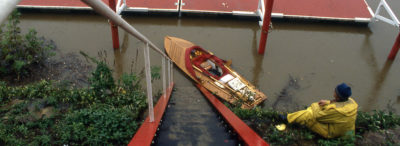


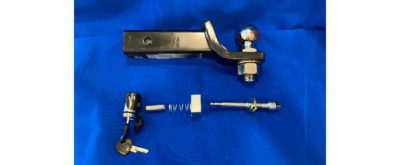



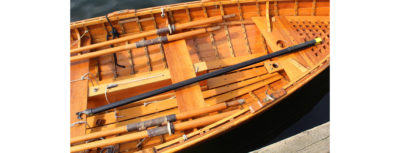
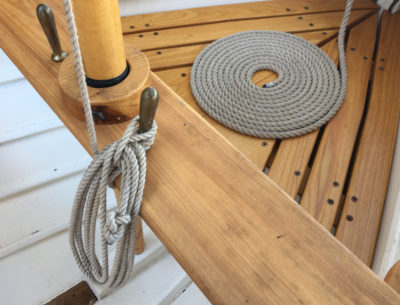
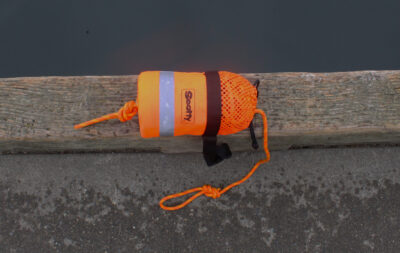
Great review of the Salus Coastal Personal Flotation Device (PFD). The main difference between a PFD and a life jacket is that a life jacket is designed to keep the occupant face up and hopefully still able to breathe even in an unconscious position in the water. The PFD is not tested for this capability. The Salus product is a PFD.This should be a consideration of the wearer when selecting this very important piece of marine safety equipment. The most important PFD or Lifejacket is the one you will wear.
Thanks Ian – You’re absolutely right concerning the difference between a PFD and a lifejacket and I agree that every sailor needs to be aware of that distinction when determining their own risk tolerance. I generally wear a PFD when I’m out because it provides a significant level of safety along with being comfortable enough to wear for extended periods of time, and move freely.
I have been wearing this life jacket for several years and like it better than any other jacket that I have used.
This is a very useful review. I have two inflatables, one with safety harness, and they both feel like I have a fire hose wrapped around my neck. A comfortable “jacket” will be a welcome addition to my kit, and I’ll keep my fire hoses for when the Coast Guard boards my 12′ Scamp. Now, how to determine what size to order………..
Thanks Michael,
On the us.binnacle.com site, if you’re on the page for the Salus Coastal, you’ll find a sizing chart under the “More Views” tab with the other photos. I found that to be acurate for me.
I don’t see it around much this part of the country (Western Edge of Lake Superior), but I have talked to a few sailors that have used it on the Trans-Superior. The comfort and built in harness were big factors in why they like it.
I particularly like that it appears to have padding in the lower back.
Yep! I just measured the back pad on mine at 1-1/2″ . It makes leaning back against the coaming pretty comfortable.
I tried out my inflatable in the pool, and it darned near gave me whiplash. For canoeing or kayaking, where there you may count on getting pretty wet, I prefer a non-automatic inflatable. I use a Mustang, which has a pull lanyard for deploying.
Interesting product.
As for the harness, I have been told from several sources that if you use it the attachment to boat should be so short that you cannot drop overboard – but that has always been about bigger boats with lifelines etc…
Hi Seppo,
I have also heard that advice, but do think it applies to larger craft. In my boat, if I had it short enough that I didn’t fall out, I wouldn’t be able to stand up with it : ). I know there is some debate about the ideal length, but my sense is that I want to keep enough length that I’m clear of my boat if I capsize. A short strap could potential get caught up on the boat and pull a person under.
The Type 3 USCG approved non-inflatable PFD with gear carrying ability is pretty well populated. Where this one seems unique is the built-in harness and leg line. I like it.
The USCG approved PFD I’ve been using for rowing is a Mustang semi-inflatable designed for the fishing industry, which doesn’t want pockets. Having tested it by capsizing a canoe, it has enough floatation for swimming, shaking out the canoe, and climbing aboard, which would be hard with anything except the most extreme kayaking vests. Merit of the one I have is that there isn’t anything for oar handles to catch. I can attach a PLB to the shoulder strap as well as a big whistle and in the one small gear pouch carry a laser signal.